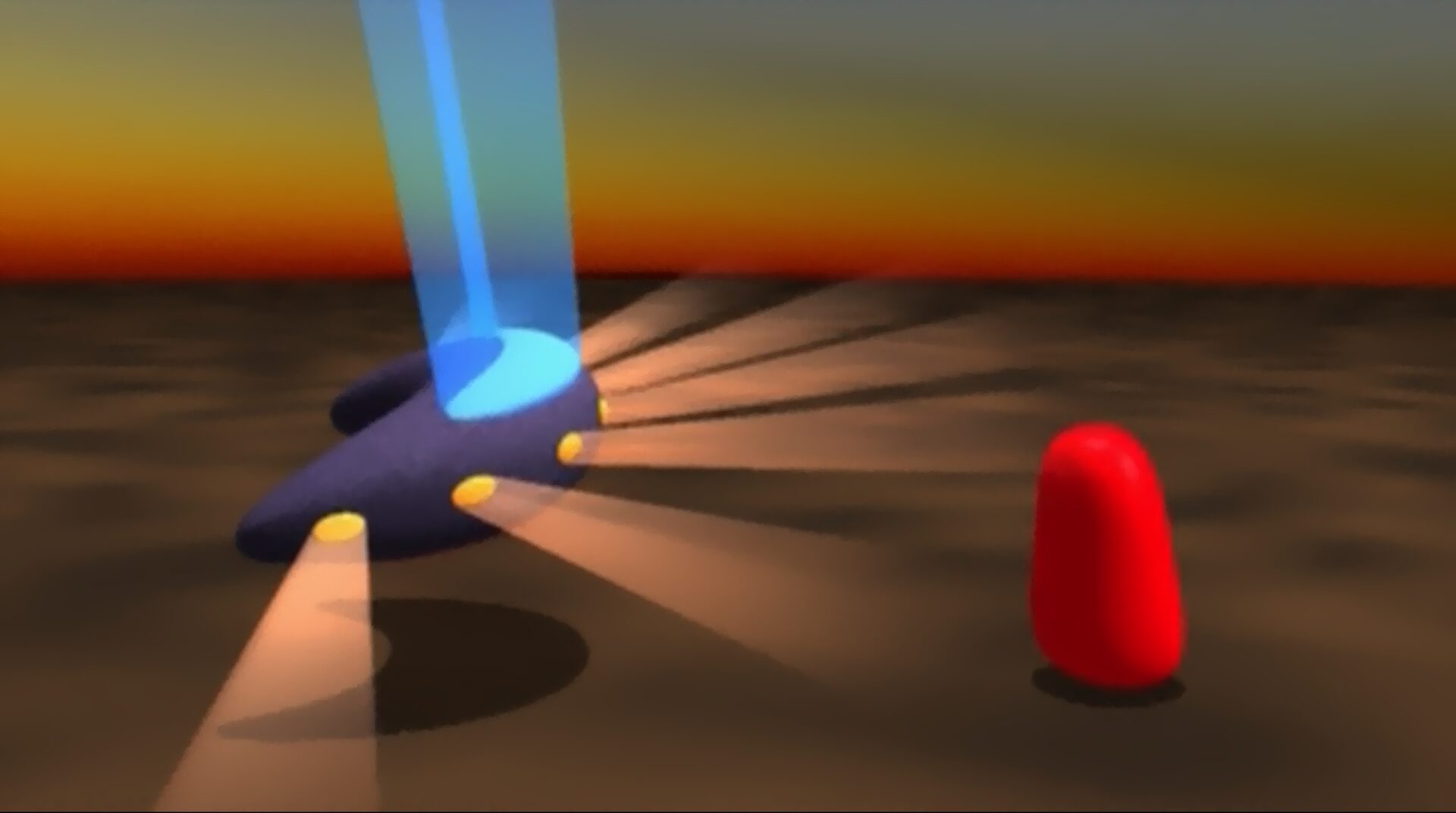(text written in 1996)
The Visual Interpretation of Music (VIM) is a new system to generate images (or other stimuli) based on music. This system starts from a musical artwork (already created) and has the goal to offer a graphic visualization of the same musical artwork. The main criteria of the VIM, Visual Interpretation of Music is:
The artwork is already done before starting (the chosen musical piece), and the most important is to transmit visually, in the most faithful and approximate way, the same richness and variety of acoustic stimuli (sensations, impressions, emotions, feelings, messages) that the composer and the musicians expressed the day of recording.
Because its an interpretation, each person imagines it in a different way, so the possible graphic styles are infinite. My personal analysis about the musical and acoustic language (with the intention of translating it to a visual language) is the following:
The graphic parameters that we can use are shapes, textures, colors or lights, and what is more important (from my point of view): the movements. The image in movement is the more close to music, because is also inside the dimension of time.
The atmospheres or general ambient that the musical piece suggests, I translate them into a stage or scenery (with defined lights and textures) that changes if the music goes through different ambient parts.
The type of sound or timbre of each instrument, I interpret it as a shape, object, character or group of shapes that represents the instrument as a different acoustic identity inside the musical piece.
To express visually the exact notes of a melody or rhythmic pattern, I use movements and colors of the objects-characters that interpret the instruments. The more complex as melody or pattern is, the more simple we need the object shape to allow using movements and colors as main interpretative parameters.
Movements:
By means of movements we can describe a path or choreography for an object that interprets visually the melody ‘drawing’ in time and in the scale of frequencies. Also with movement we can describe the percussive sensation of a note with attack or a percussion sound, using a movement more or less abrupt or collisioning. Soft notes will be described with soft movements.
The possibilities that movements offer allows us, in a melody, to describe different steps (one for each note) inside a choreography, path or melodic draw (using turns, folding, hits, etc). For this reason, the shape of the objects-instruments is conditioned to the movements we want to use, to make them understandable visually. If we want to use rotation movements or turns (e.g.), the shape of the objects has to be enough simple and asymmetric for the turn movement to be clearly understood visually.
Colors:
By means of color variations of the object we can describe the variations in frequency or tone of each note.
The color (or colors) of the object-character, can be changed without affecting the movement, allowing us to deepen in the musical analysis and describe different colors to represent the different parts of each note: attack, duration and ending. Usually the speed at which this three factors happen inside each note, makes the represented synchronized chromatic stimuli to go, some, at a subliminal speed.
By means of this detailed translation of sound, we approach a bit more to the richness of stimuli of a music. The speed at which, sometimes, the musical notes of the instruments sound, means that the visual stimuli to define or animate are very meticulous and detailed (specially movements and colors), and therefore very often we have to work frame by frame.
To streamline the production of visual interpretations of music we have to profit from the latest technological advances like the new tools (or plugins) of 3d animation, the automatic application of colors, etc. These tools must allow to use the audio tracks as sources of information, by the different parameters of sound: volume, frequency and timbre.
The ideal way to generate visual interpretation of music will be by means of a specially designed program or software for this task, grouping tools of already existent audiovisual programs and maybe some new tool easy to develop.
Examples of Visual Interpretation of Music:
(updated in 2025)

sebas
Musicographic creativity: Visual interpretation of music, musical composition, animation, interactives and design.